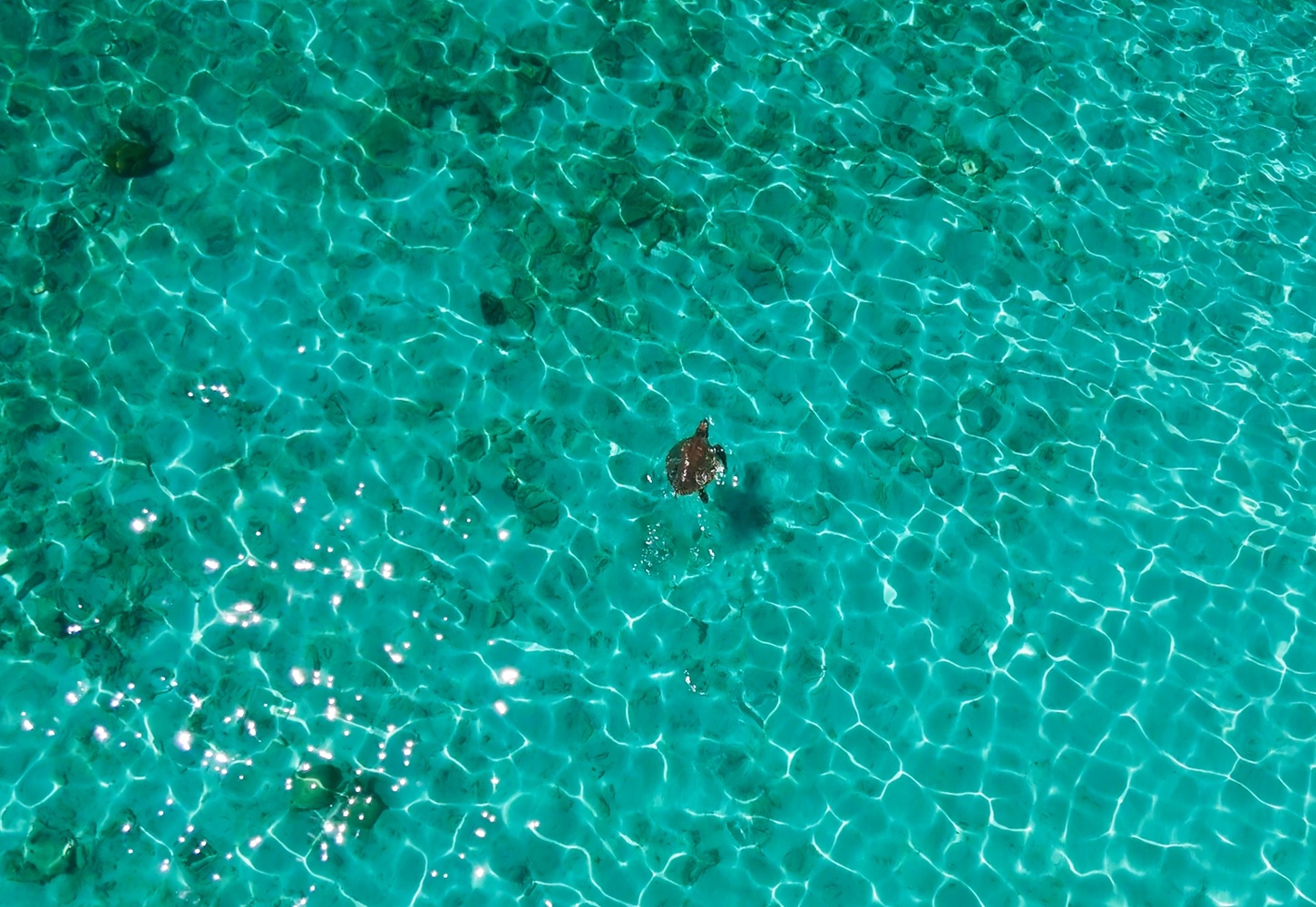JOALI BEING, in collaboration with the Olive Ridley Project (ORP), proudly announces the release of Kurangi, the first sea turtle patient admitted to the island’s Sea Turtle Rehabilitation Centre in May 2024. After nearly six months of dedicated rehabilitation and care, Kurangi was returned to the ocean on 2nd November 2024, in a celebratory event held at JOALI BEING.
Kurangi, named after the Dhivehi word for ‘Lesser Noddy’ - a seabird native to the Maldives – is a juvenile olive ridley turtle found entangled in a ghost net in Shaviyani Atoll in August 2023. She was rescued and admitted to the Olive Ridley Project’s Marine Turtle Rescue Centre in Baa Atoll with serious injuries to both front flippers, leading to the
amputation of her left flipper. After a successful surgery and initial recovery, Kurangi was transferred to the newly opened Raa Atoll Sea Turtle Rehabilitation Centre in JOALI BEING, where she continued her healing journey.
Despite facing a buoyancy syndrome, Kurangi gradually responded to the tailored rehabilitation process, which included Targeted External Weight Therapy and dive training under the guidance of the resident Sea Turtle Biologist and Marine Biology team. Her resilience and progress made her a favourite amongst guests at JOALI BEING, who followed her inspiring journey during the past half year. Kurangi finally returned to her ocean home on 2nd November 2024, where
guests and the team at JOALI BEING celebrated her recovery and bid a heart-warming farewell.
"Since the opening of JOALI BEING, we have been deeply committed to conserving and preserving the incredible marine habitats that surround us,” says Graeme Freeman, General Manager. “The successful release of Kurangi marks a major milestone with the opening of our Raa Atoll Sea Turtle Rehabilitation Centre - a long-standing dream made possible through the dedication of our team and the invaluable support by the Olive Ridley Project. Together, we look
forward to advancing our efforts to protect and rehabilitate our local sea turtle population.”
Resident Turtle Biologist, Abdulla Hameed, further comments “Kurangi’s recovery has been remarkable, and I’m immensely proud to have been part of her journey here at JOALI BEING. We wish her all the best as she returns to the ocean, the home where she truly belongs. As we continue our commitment to sea turtle conservation, we look forward to achieving even greater progress in the coming months.”
Sea Turtle Conservation at JOALI BEING
At JOALI BEING, guests have the opportunity to visit the Raa Atoll Sea Turtle Rehabilitation Centre, where they can learn about the journey of in-house turtle patients and actively support sea turtle conservation through symbolic adoptions. Each adoption includes an official certificate and monthly progress updates on the adopted turtle.
In alignment with the Olive Ridley Project and JOALI BEING’s outreach initiatives, the Rehabilitation Centre also invites Raa Atoll residents including local government members, students, and community members - offering educational visits to foster awareness and engagement in sea turtle conservation efforts.
The Raa Atoll Sea Turtle Rehabilitation Centre at JOALI BEING not only focuses on rehabilitation but also plays an essential role in advancing scientific research on wild sea turtles. The island serves as a vital nesting site for the critically endangered hawksbill sea turtle, a species facing an urgent risk of extinction. In partnership with the Olive Ridley Project, JOALI BEING ensures that turtle nests are protected throughout the nesting season, safeguarding them from disturbance.
After hatching, controlled excavations, conducted with permits from local authorities, help determine hatchling survival rates and factors affecting outcomes, contributing to invaluable research on sea turtle reproductive biology. Additionally, the resident Turtle Biologist performs regular in-water surveys through diving and snorkeling, monitoring the local sea turtle population in Raa Atoll using photo identification methods. Each turtle’s unique facial pattern, much like a human fingerprint, allows for individual identification. By uploading these photos into a central database, researchers can track turtle movements, identify preferred habitats, assess population trends, and gain insight into current threats facing these remarkable creatures.
